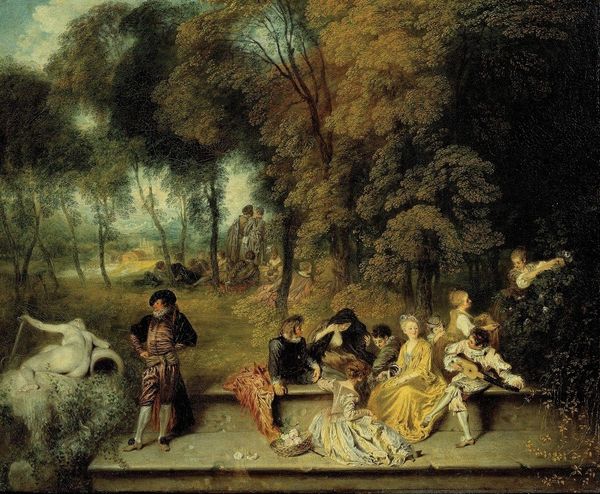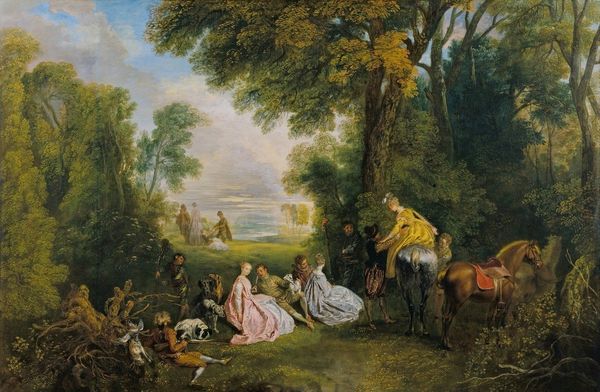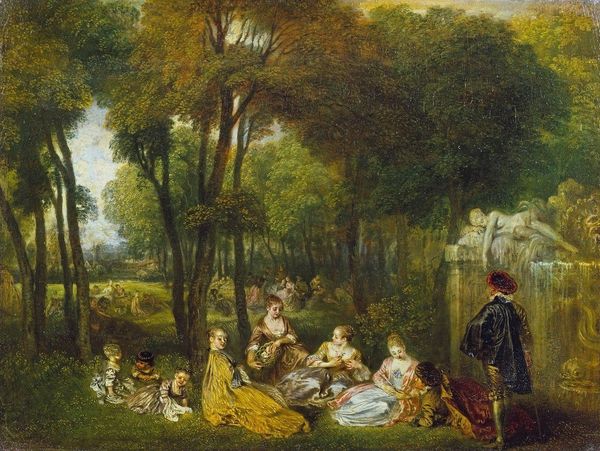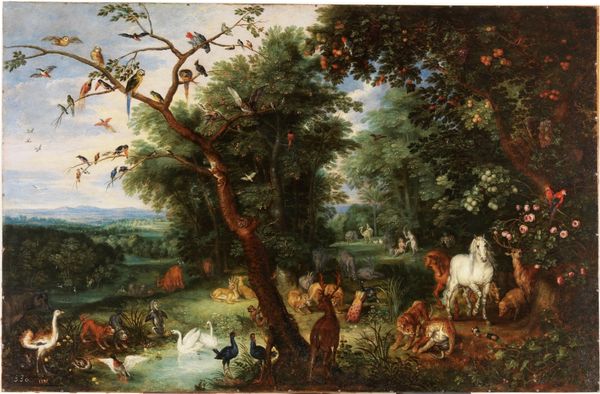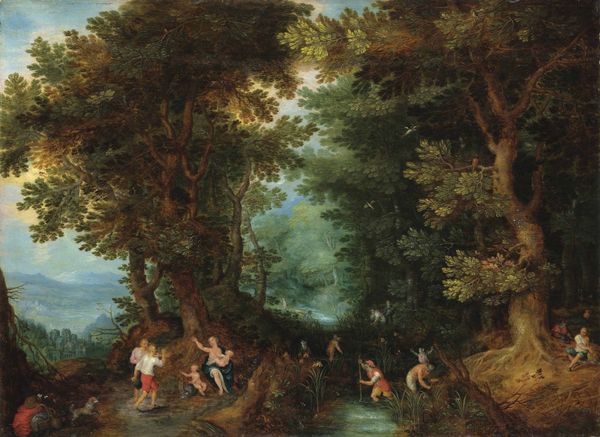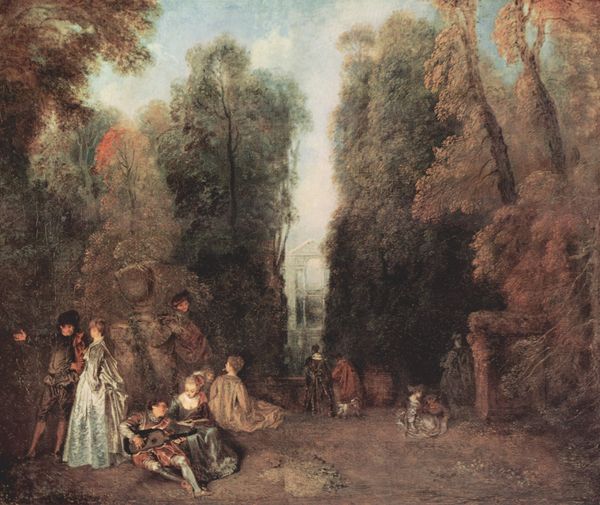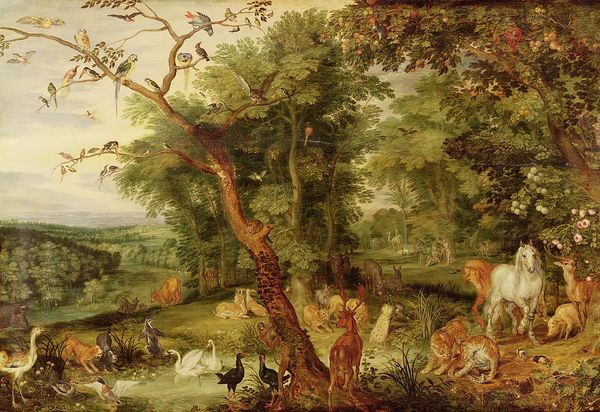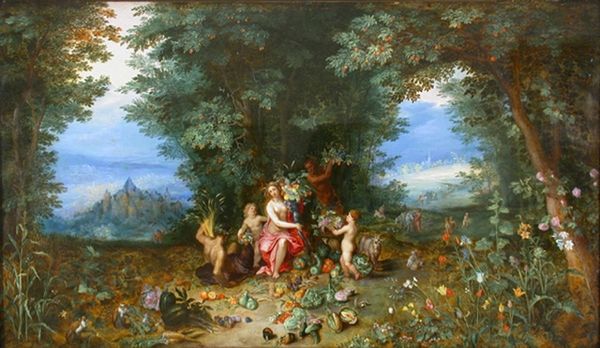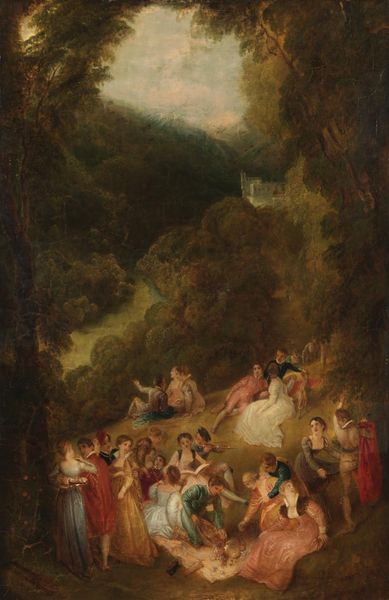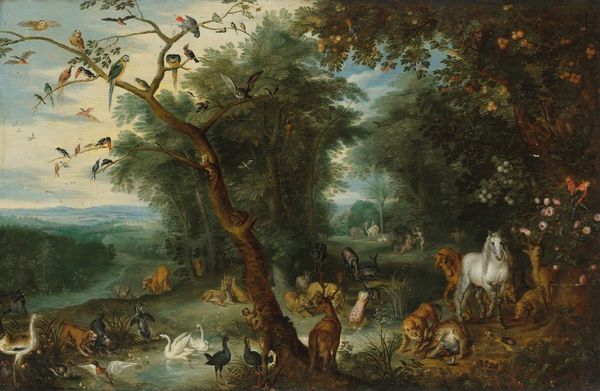
painting, oil-paint
#
fairy-painting
#
painting
#
oil-paint
#
landscape
#
genre-painting
#
history-painting
#
rococo
Copyright: Public Domain: Artvee
At first glance, this painting might seem like a simple representation of aristocratic leisure. Painted by the French artist Jean-Antoine Watteau between 1719 and 1721, ‘Fête galante in a Wooded Landscape’ suggests the easy lifestyles of the Second Estate (the privileged nobility) in the early eighteenth century. However, behind the oil paint lies a fascinating insight into the social reality and complex power dynamics of pre-Revolution France. Dressed in extravagant fashions, several groups of people lounge and play against the background of an idealised landscape. The expensive fabrics and embellishments of their outfits clearly connote their high social statuses. Besides, the Third Estate (working classes) definitely wouldn’t have found the time for spontaneous picnics such as this! A beautiful forest occupies most of the painting, while we see a Northern village in the far distance towards the left side of the canvas. The setting is neither entirely natural or manmade – it’s staged in an in-between space which is almost theatrical. Could Watteau be rejecting the rigid formalities of eighteenth-century France? The female figure placed on a plinth towards the right side of the painting is equally symbolic. Here, Watteau has used grey tones to suggest the smooth stone of a sculpture. The nude woman has long, loose hair which tumbles down past her shoulders – suggesting that she is free and relaxed. Her natural hair contrasts with the perfect hairstyles of the aristocratic women who are seated in the forest clearing. Watteau might be pointing towards the possibility of an escape from social expectations and fixed hierarchies. Watteau was born in 1648 and died at the age of just 36. His brief career revolutionised French painting, making way for the Rococo period. Rococo is recognised for its ornamentation and elaborate details, unlike the sombre symmetry of the Neoclassical style. This particular painting was completed towards the end of Watteau’s short life. ‘Fête galante in a Wooded Landscape’ is much larger in scale than many of the artist’s other works. This creates a monumental tone rather than the intimate impression that we might expect from a relaxed scene such as this. Purchased for 1050 guineas in 1848, the painting is now displayed in the grand Dining Room of the Wallace Collection in London. Imagine seeing this work in such a regal and extravagant setting, surrounded by gold ornaments and rich wallpaper. How would this affect your interpretation of the painting?
Comments
No comments
Be the first to comment and join the conversation on the ultimate creative platform.
